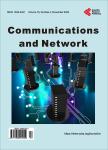On the Trade-off between Power Consumption and Time Synchronization Quality for Moving Targets under Large-Scale Fading Effects in Wireless Sensor Networks
On the Trade-off between Power Consumption and Time Synchronization Quality for Moving Targets under Large-Scale Fading Effects in Wireless Sensor Networks作者机构:Embedded Systems Laboratory Faculty of Engineering University of Buenos Aires Argentina Signal Processing and Communications Laboratory Faculty of Engineering University of Buenos Aires Argentina Signals and Systems for Computing Group Faculty of Engineering Catholic University PUCRS Brazil
出 版 物:《Communications and Network》 (通讯与网络(英文))
年 卷 期:2013年第5卷第3期
页 面:498-503页
学科分类:080904[工学-电磁场与微波技术] 0810[工学-信息与通信工程] 0809[工学-电子科学与技术(可授工学、理学学位)] 08[工学] 080402[工学-测试计量技术及仪器] 0804[工学-仪器科学与技术] 081001[工学-通信与信息系统]
主 题:Wireless Sensor Networks Clock Offset Estimation Time Synchronization Wireless Channel Fading Moving Targets
摘 要:In this work we find a lower bound on the energy required for synchronizing moving sensor nodes in a Wireless Sensor Network (WSN) affected by large-scale fading, based on clock estimation techniques. The energy required for synchronizing a WSN within a desired estimation error level is specified by both the transmit power and the required number of messages. In this paper we extend our previous work introducing nodes’ movement and the average message delay in the total energy, including a comprehensive analysis on how the distance between nodes impacts on the energy and synchronization quality trade-off under large-scale fading effects.




